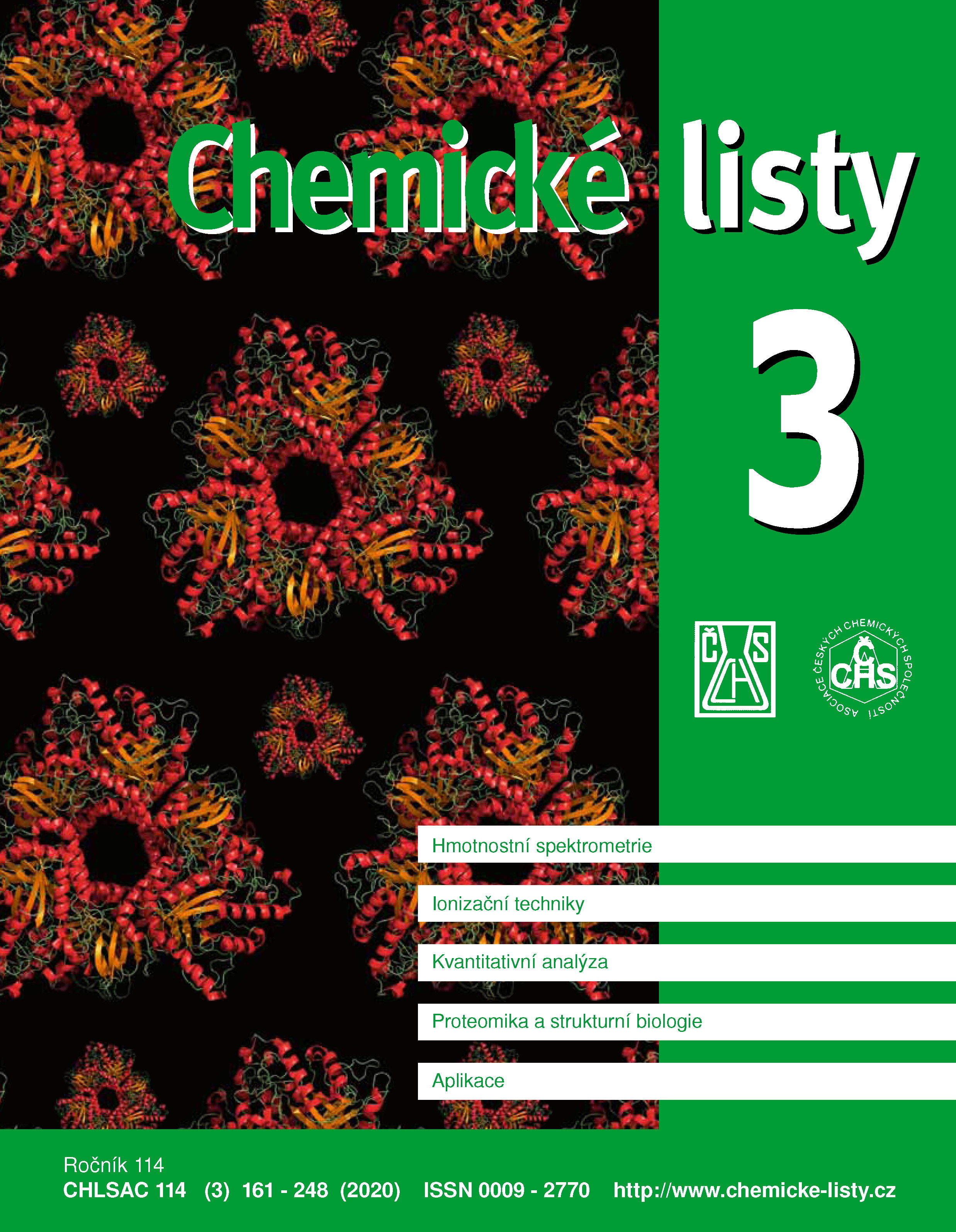Ionizace elektrosprejem
Klíčová slova:
hmotnostní spektrometrie, elektrosprej, nanoelektrosprej, separační techniky, vícenásobně nabité iontyAbstrakt
Electrospray belongs to ion sources most often used in mass spectrometry today. This ionization has enlarged the applicability of mass spectrometry in analysis of polar and ionic compounds or biomacromolecules, especially proteins. Electrospray source also serves as an interface coupling liquid and supercritical fluid chromatography or capillary electrophoresis with mass spectrometry. Applying high voltage (in kV range) to a spray capillary, the solution is nebulized, charged droplets are generated, from which ions (positive or negative according the selected mode) are released to the gas phase. The spray capillary with inner diameter in tens of micrometers is used in electrospray. Applying the miniaturization down to 1–2 µm, nanoelectrospray was proposed and designed. In comparison to electrospray, it generates lower flow-rates, which means smaller sample consumption. The source is more tolerant to salts in sample solution but experimental work can be more demanding. Although the electrospray ionization is influenced by various factors (such as the structure of analytes, solvents and other components of sample solution, its flow-rate, setting of spray voltage or the design of the ion source), its use is easy and the source is robust. Electrospray has found many applications, e.g. in analysis of clinical samples, drugs, metabolites, synthetic polymers, surface active compounds, pesticides, peptides or proteins.





